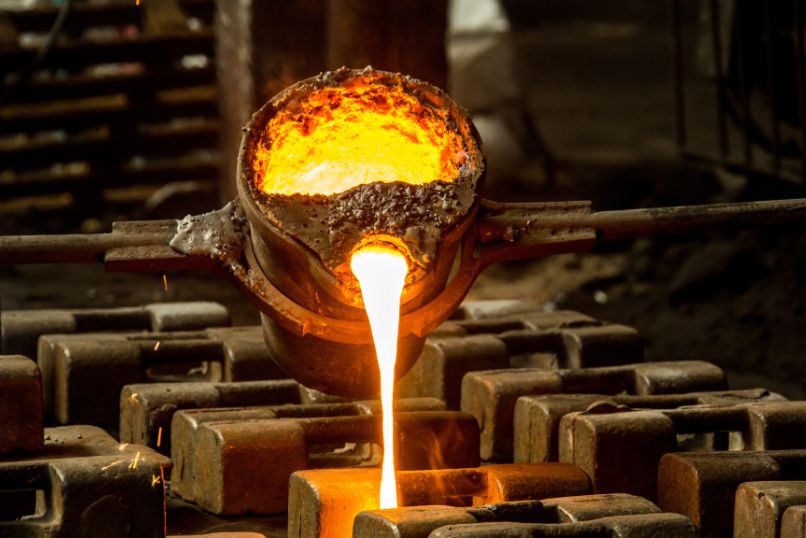For most people, the word “bronze” conjures up images of statues and sculptures.
Indeed, some of the world’s most famous artworks consist of bronze, including Auguste Rodin’s The Thinker and the Statue of Liberty.
But many people don’t realize that bronze is also used for various industrial applications, including engine bearings, valves, gears, and other moving parts. About two-thirds of all bronze produced is for industrial purposes.
Bronze is one of the oldest known metals, and bronze casting has been around for thousands of years. Let’s look at the process of bronze casting and its uses.
History of Bronze Casting
The first known use of bronze dates back to around 3000 BCE in Mesopotamia.
Bronze is an alloy of copper and tin, and it was created by accident when people were trying to make copper tools and weapons. The addition of tin to copper made the metal harder and more durable, which made it perfect for creating tools and weapons. Bronze casting alloys typically contain 85 to 95 percent copper and 5 to 15 percent tin.
Bronze quickly became popular because it was stronger than copper and less likely to break. It was also easier to shape and mold than other metals.
The first bronze sculptures were crafted in China around 2000 BCE. These were small statues of animals and humans.
The Bronze Casting Process
The process of bronze casting has changed very little over the centuries.
The first step is to create a mold of the desired shape. You can do this with clay or plaster. After creation, the mold must dry thoroughly to prevent it from cracking when you pour in the hot bronze.
Next, the bronze melts in a furnace. The melting point of bronze is around 1200 degrees Celsius. Once the bronze melts, you pour it into the mold. It is important to pour the bronze slowly and carefully to avoid damaging the mold.
After you pour the bronze, you must allow it to cool and harden. This step usually takes several hours. Once it is hard, you can remove the bronze from the mold.
The final step is to finish the bronze. You can do this by polishing, patinating, or adding a lacquer coating.
Uses for Bronze Casting
As mentioned, most bronze is for industrial purposes. Bronze is often used to craft engine bearings, valves, gears, and other moving parts because it is strong and durable. It is also resistant to corrosion and wears.
Bronze also works well to produce coins, medals, and other objects that need a certain shape. Because bronze is a relatively soft metal, it can also create statues and sculptures.
These are just some of the many uses for bronze casting. Whether you are an artist or an engineer, bronze casting can be a useful process for you.
Wieland Diversified offers several cast bronze alloys to help you with your manufacturing or machinery needs. Contact us today to learn more about our products and services.

